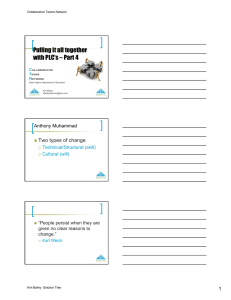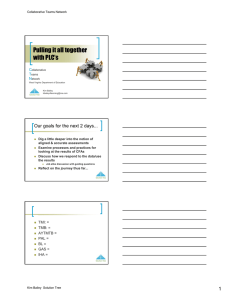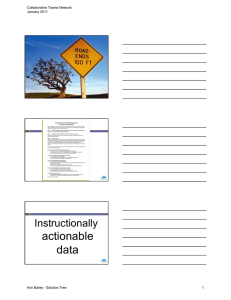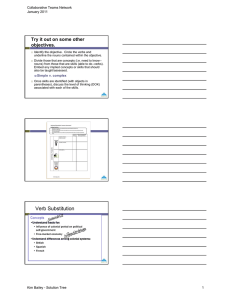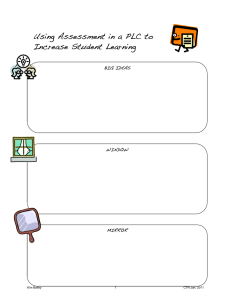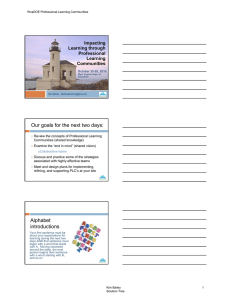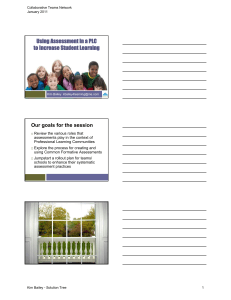Pulling it all together with PLC’s – Part 2
advertisement
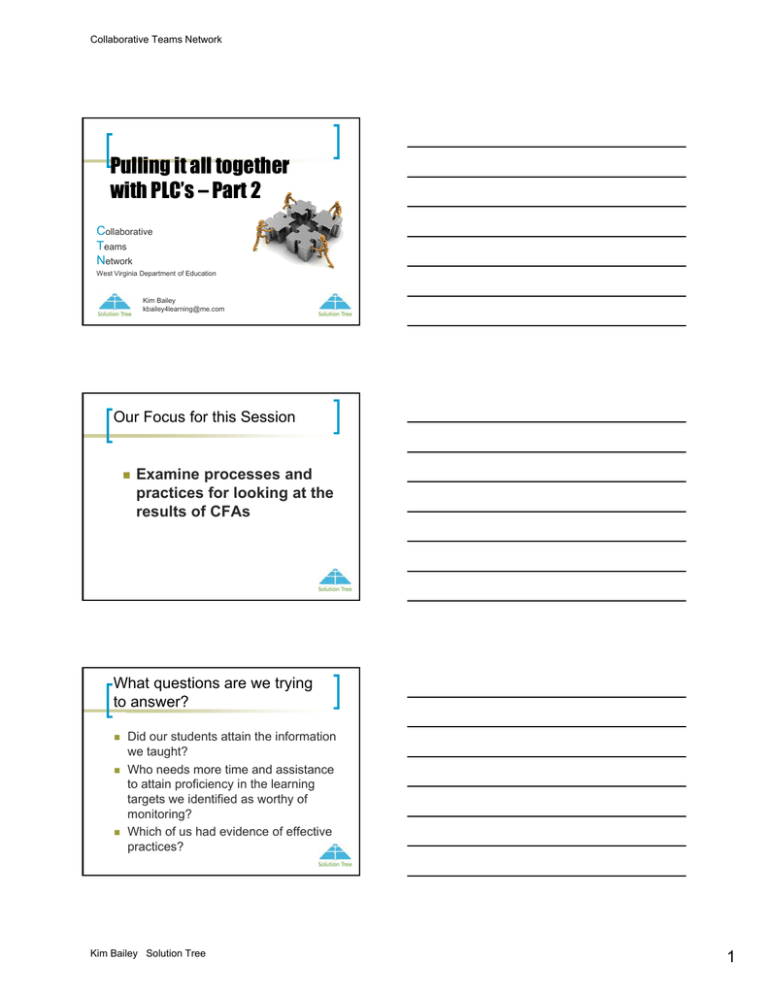
Collaborative Teams Network Pulling it all together with PLC’s – Part 2 Collaborative Teams Network West Virginia Department of Education Kim Bailey kbailey4learning@me.com Our Focus for this Session Examine processes and practices for looking at the results of CFAs What questions are we trying to answer? Did our students attain the information we taught? Who needs more time and assistance to attain proficiency in the learning targets we identified as worthy of monitoring? Which of us had evidence of effective practices? Kim Bailey Solution Tree 1 Collaborative Teams Network What doesn’t help answer these questions? Anonymity Averages g Assumptions A Framework for Looking at Results T Turn it around A A Arrange Analyze it it D A Discuss it Act on it Turnaround time... No later than 48 hours Short assessments Clear, simple data Kim Bailey Solution Tree 2 Collaborative Teams Network How do we arrange the information? By learning targets By teacher By student A collaborative mindset... Norms reminders Let the data do the talking Keep the data the central focus Let the team make meaning Keep going back to the assessment Guide on the side, not sage on the stage Allows for more detailed analysis Analyze for… Trends & Patterns (big picture) Learning targets that were successful Learning targets that did not appear to be learned successfully Were there common incorrect answers or operational errors? Overall comparison between class results Kim Bailey Solution Tree 3 Collaborative Teams Network Analyze for… Up close and personal (student level analysis) Which students require additional time and support? What specific skills and concepts need to be addressed/corrected? What strategies appeared to be most effective? What might have caused some gaps in learning? What misperceptions might have formed? How will we support our students who need additional time and support? Plan of action What is our specific plan to support the students who didn’t reach proficiency? How might we all employ the strategies that seemed most effective? What is our commitment to use these strategies? What adjustments should be made in our assessment? Who will do these? Kim Bailey Solution Tree 4 Collaborative Teams Network TABLETOP ACTIVITY Tabletop Activity As a group of 3 or four, examine the data you’ve been provided Reflection on process How does today’s tabletop activity relate to your teams’ current practice of examining g CFA results? What thoughts do you have about propelling the quality of the conversations and ultimately, the actions, in a forward direction? Kim Bailey Solution Tree 5
